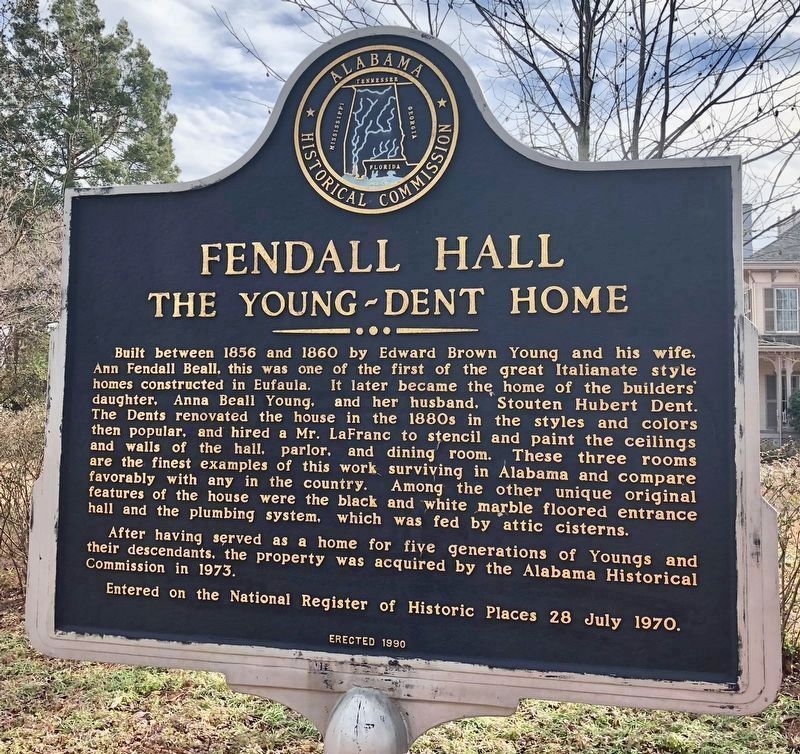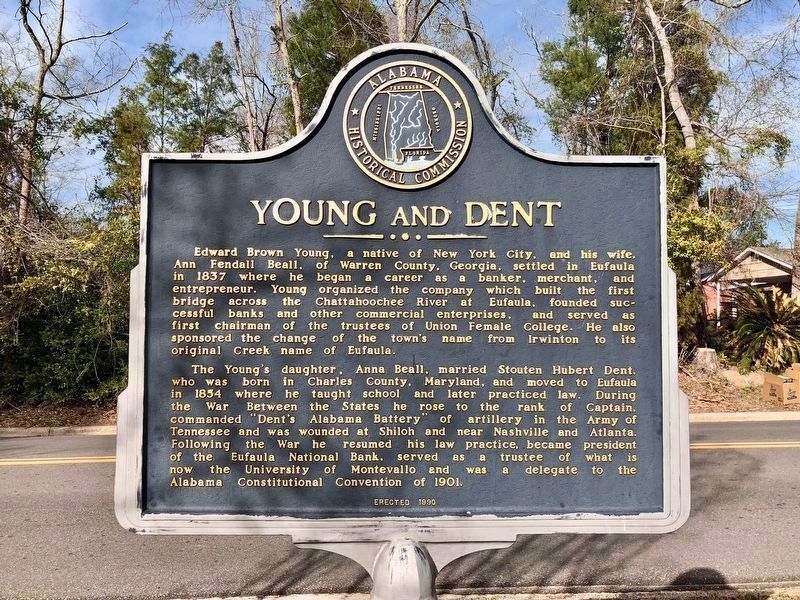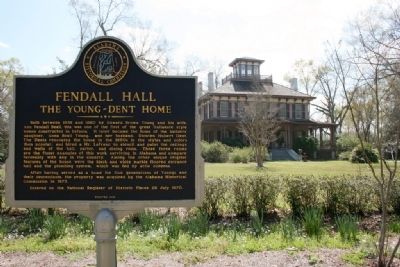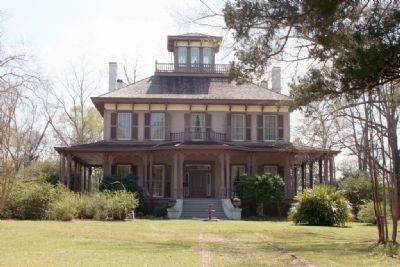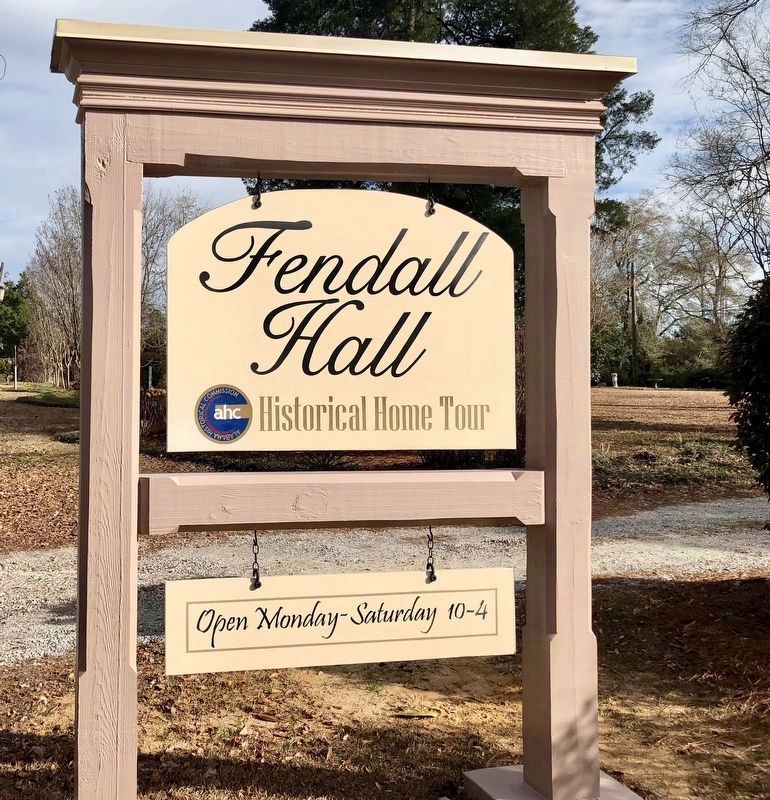Eufaula in Barbour County, Alabama — The American South (East South Central)
Fendall Hall / Young and Dent
The Young - Dent Home
Built between 1856 and 1860 by Edward Brown Young and his wife, Ann Fendall Beall, this was one of the first of the great Italianate style homes constructed in Eufaula. It later became the home of the builders’ daughter, Anna Beall Young, and her husband, Stouten Hubert Dent. The Dents renovated the house in the 1880s in the styles and colors then popular, and hired a Mr. LaFranc to stencil and paint the ceilings and walls of the hall, parlor, and dining room. These three rooms are the finest examples of this work surviving in Alabama and compare favorably with any in the country. Among the other unique original features of the house were the black and white marble floored entrance hall and the plumbing system, which was fed by attic cisterns.
After having served as a home for five generations of Youngs and their descendants, the property was acquired by the Alabama Historical Commission in 1973.
Entered on the National Register of Historic Places 28 July 1970.
Reverse:
Edward Brown Young, a native of New York City, and his wife, Ann Fendall Beall, of Warren County, Georgia, settled in Eufaula in 1837 where he began a career as a banker, merchant, and entrepreneur. Young organized the company which built the first bridge across the Chattahoochee River at Eufaula, founded successful banks and other commercial enterprises, and served as first chairman of the trustees of Union Female College. He also sponsored the change of the town’s name from Irwinton to its original Creek name of Eufaula.
The Young's daughter, Anna Beall, married Stouten Hubert Dent, who was born in Charles County, Maryland, and moved to Eufala in 1854 where he taught school and later practiced law. During the War Between the States he rose to the rank of Captain, commanded "Dent's Alabama Battery" of artillery in the Army of Tennessee and was wounded at Shiloh and near Nashville and Atlanta. Following the War he resumed his law practice, became president of the Eufala National bank, served as a trustee of what is now the University of Montevallo and was a delegate to the Alabama Constitutional Convention of 1901.
Erected 1990 by Alabama Historical Commission.
Topics and series. This historical marker is listed in these topic lists: Architecture • Education • Industry & Commerce • War, US Civil. In addition, it is included in the Alabama Historical Commission series list. A significant historical date for this entry is July 28, 1970.
Location. 31° 53.524′ N, 85° 9.419′ W. Marker is in Eufaula, Alabama, in Barbour County. Marker is on West Barbour Street, on the left when traveling west. Touch for map. Marker is at or near this postal address: 917 West Barbour Street, Eufaula AL 36027, United States of America. Touch for directions.
Other nearby markers. At least 8 other markers are within walking distance of this marker. William Dorsey Jelks Governor of Alabama (about 500 feet away, measured in a direct line); General Grierson’s March (approx. ¼ mile away); Charles Samuel McDowell, Jr. (approx. 0.4 miles away); Chauncey Sparks (approx. half a mile away); Cowikee Cotton Mills (approx. 0.7 miles away); Eufaula First United Methodist Church (approx. 0.7 miles away); Hart House (approx. 0.7 miles away); Vietnam Veteran Park (approx. 0.7 miles away). Touch for a list and map of all markers in Eufaula.
Credits. This page was last revised on November 2, 2019. It was originally submitted on February 25, 2010, by Timothy Carr of Birmingham, Alabama. This page has been viewed 4,698 times since then and 1,683 times this year. Last updated on July 29, 2010, by Timothy Carr of Birmingham, Alabama. Photos: 1, 2. submitted on February 3, 2018, by Mark Hilton of Montgomery, Alabama. 3, 4. submitted on February 25, 2010, by Timothy Carr of Birmingham, Alabama. 5. submitted on February 3, 2018, by Mark Hilton of Montgomery, Alabama. • Kevin W. was the editor who published this page.
